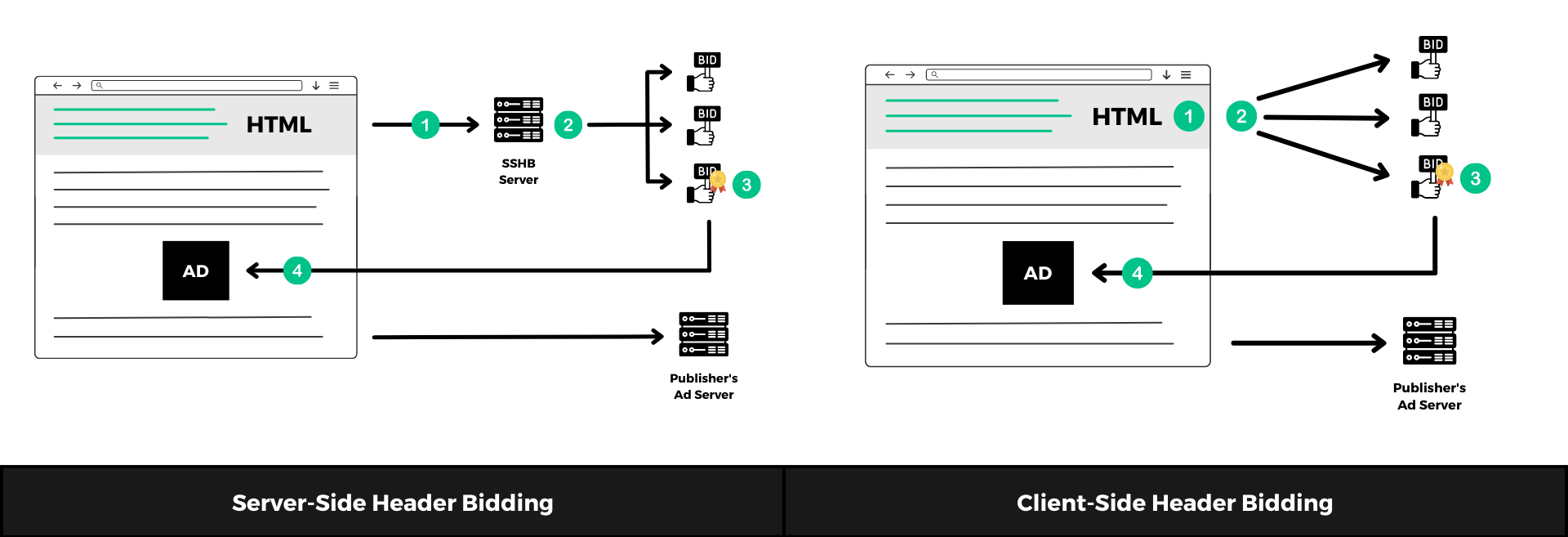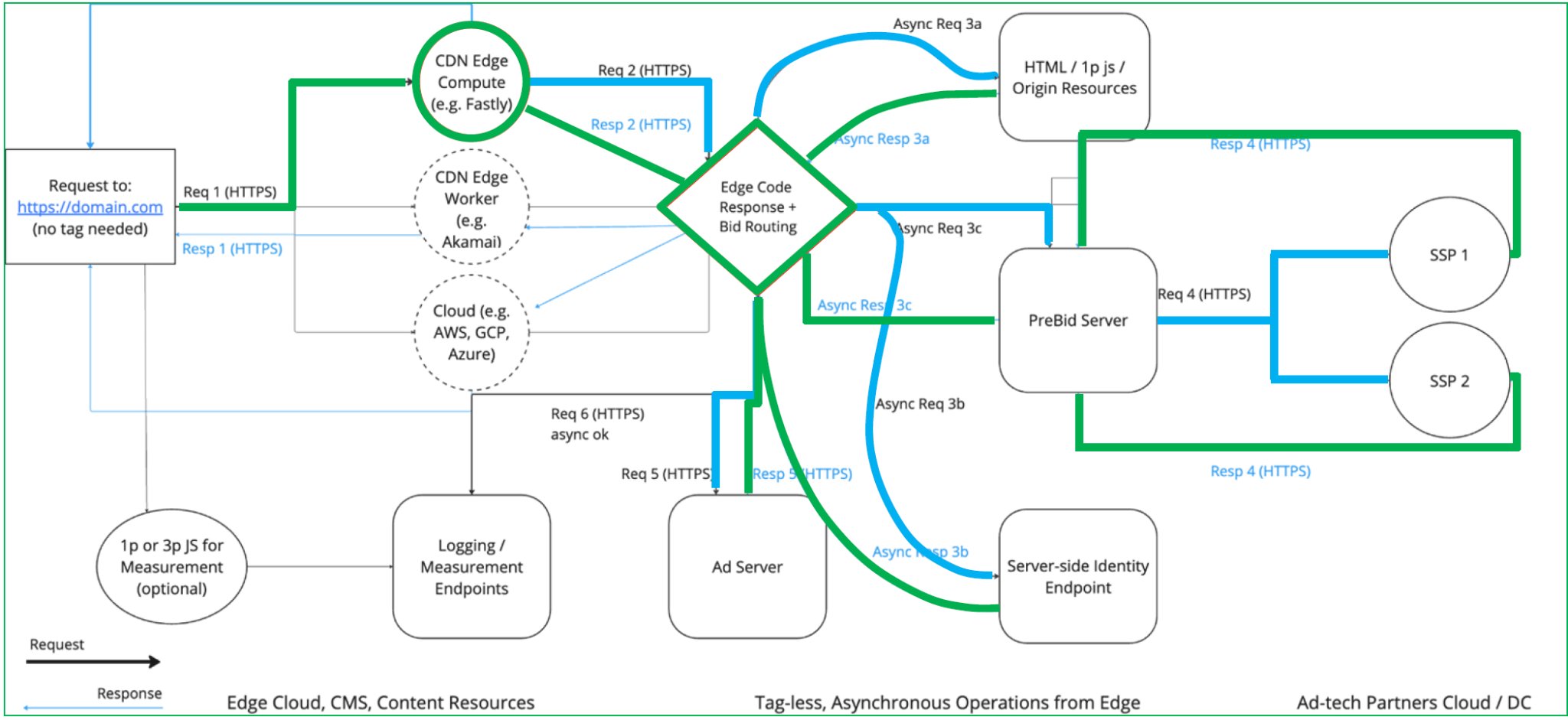Every year IAB Tech Lab publishes a roadmap and for 2025 a number of interesting projects are mentioned, sitting alongside the traditionally anticipated updates and ongoing improvements as per their 5 core ‘pillars of innovation’.

One new project mentioned was Privacy Lab, which we look forward to hearing more about this year – but another is the Trusted Server initiative for Publishers, the PoC (Proof of Concept) for which has just been released.
Below we try to summarise the core purpose of this project, the reasons for this project being launched and also providing links and starting points for any local publishers keen to start testing this open-source project. Something which we fully support here in Australia and will help with as much as we can.
These are early days, but it’s an interesting and benevolent initiative and one which Tech Lab are living up to their name by simply trying to provide something different to simplify and protect monetisation opportunities for publishers, at a time when they are increasingly under pressure from all angles. The web browser ecosystem is relentlessly reducing the capabilities for ad-funded monetisation in web-based environments, and goodwill open-source projects such as the Trusted Server are simply trying to give back control to publishers moving forwards in tough and uncertain times.
As a reminder, IAB Tech Lab is a global nonprofit consortium that develops, oversees and updates critical global technical standards and solutions – designed to enable and support a healthy and sustainable digital media and advertising industry. Its core areas of focus are transparency, fraud, identity, data, consumer privacy, ad experiences & measurement, and programmatic effectiveness. To find out more, simply click here
What is the Trusted Server & Why Is It Needed?
The Tech Lab Trusted Server, is an open-source, server-side ad management framework designed to give publishers greater control over their digital advertising monetisation, in the face of increasing browser restrictions and ongoing privacy regulations.
This project is only a ‘Proof of Concept‘ for now, and IAB Tech Lab is seeking feedback and publisher volunteers to engage collaboratively in this initiative.
However the proprietary framework is up and can be setup and tested using Fastly (a popular edge cloud platform) and also integrates with Prebid. Prebid is a very widely used programmatic auction tool which is free (and also open-source) providing a suite of products designed to enable publishers to implement header bidding on their websites. For more information on setting up and testing the Trusted Server, see further below this article.
Overall the core intention of the Tech Lab Trusted Server solution is to shift critical advertising functions for Publishers – such as ad requests, auction execution, and creative delivery – from the client-side (browser) to a publisher-controlled server-side environment.
A well-known example of this form of evolution (client-side to server-side) was seen some years ago when publishers began embracing the benefits of server-side capabilities for header bidding for their open-market programmatic activities. This allowed them to simultaneously offer ad inventory to multiple demand sources, which have since advanced from latency-laden client-side solutions to sophisticated, privacy-compliant server-side systems.

image source: Freestar
There are a number of critical reasons that IAB Tech Lab are now looking into to enabling this type of solution for publishers:
Privacy Regulations & Ongoing Signal Loss
- Stricter Privacy Laws – we expect the forthcoming changes to Australia’s privacy regulations will impose restrictions on how user data can be collected and processed. Client-side ad serving often relies on third-party cookies and JavaScript, which are increasingly restricted due to privacy concerns. Server-side solutions allow publishers to process data in a first-party context, reducing reliance on third-party tracking and aligning with consent requirements.
- Cookie Deprecation – the ongoing phase-out of third-party cookies has disrupted traditional client-side tracking. Server-side ad serving preserves first-party data signals (e.g. contextual data or publisher-specific IDs) by handling them on the server, where they’re less vulnerable to browser restrictions.
- Signal Degradation – increasingly common browser features, such Intelligent Tracking Prevention in Safari and Enhanced Tracking Protection in Firefox, will block client-side scripts and limit data sharing. Server-side systems mitigate this by centralising data processing, ensuring more signals can reach demand-side platforms (DSPs) without being stripped away.
Improved Performance & Consumer Experience
- Reduced Latency – typically client-side ad serving will require multiple network requests, fetching scripts, calling SSPs, running auctions – all from the browser, which slows page load times. Server-side solutions consolidate these steps into a single server-to-server call, reducing latency and speeding up ad delivery.
- Fewer Browser Requests – moving auctions and ad rendering to the server results in the number of HTTP requests from the browser dropping significantly. This reduces page bloat, improves Core Web Vitals, and boosts SEO rankings. These are key priorities for most publishers.
- Improved Mobile Experience – on mobile devices, where bandwidth and processing power are often limited, server-side ad serving offloads work from the client, resulting in faster, smoother experiences that retain users and reduces bounce rates.
Ad Blocking and Fraud Mitigation
- Ad Blocker Resistance – most ad blockers primarily target client-side scripts and trackers. Server-side ad serving embeds ad delivery into the publisher’s own infrastructure, making it harder for blockers to distinguish ads from content. For instance, ads can be stitched into the page server-side, appearing as native content.
- Fraud Reduction – unfortunately client-side ad serving can be more susceptible to bot-driven fraud (such as spoofed impressions or fake clicks – to read our Ad Fraud Handbook click HERE) because it exposes auction logic to the browser. Server-side systems centralise control, enabling publishers to implement stronger fraud detection and traffic validation before bids are processed, reducing wasted spend.
Control and Flexibility
- Data Ownership – with client-side setups, third-party ad tech vendors often control data flows, leaving publishers with limited visibility or ownership. Server-side solutions keep data within the publisher’s domain, allowing them to leverage their first-party data for targeting, measurement, and monetisation without intermediaries skimming value.
- Customisation: Server-side frameworks such as IAB Tech Lab’s Trusted Server (and the Prebid Server) let publishers tailor auction logic, prioritise demand partners, or integrate proprietary tools. This flexibility contrasts with the rigid, vendor-driven nature of client-side setups.
- Reduced Dependency – as browsers and ‘big tech’ vendors continue to tighten their control over client-side ecosystems, server-side solutions empower publishers to future-proof their stacks and reduce their reliance on large tech vendors.
Programmatic Efficiency & Effectiveness
- Header Bidding Evolution – client-side header bidding, whilst still effective – creates latency and complexity with multiple SSP calls. Server-side header bidding (e.g. via Prebid Server) consolidates these into one server-side auction, streamlining the process and increasing fill rates by exposing inventory to more demand partners simultaneously.
- Scalability – server-side systems can handle high volumes of traffic and complex auction dynamics more efficiently than browsers, which struggle under the load of dozens of scripts and trackers. This scalability is crucial as programmatic ad spend continues to grow.
How Does the Trusted Server Actually Work?
The Tech Lab Trusted Server moves the programmatic advertising workflow out of the browser and into a publisher-operated infrastructure, hosted on a dedicated edge cloud platform called Fastly
IAB Tech Lab have chosen to integrate with Fastly, a leading edge cloud platform, in order to provide the scalable, secure, and fast infrastructure that Trusted Server relies on to execute its server-side advertising logic. Trusted Server also integrates with the Prebid Server, which allows Publishers to conduct real-time bidding with supply-side platforms (SSPs) in a controlled, server-side environment, leveraging Fastly’s fast compute capabilities.
Workflow Example
- User visits ‘publisher.com’ website
- The browser sends a request to Trusted Server at ‘edge.publisher.com’
- The Trusted Server captures first-party signals (such as the page URL or user consent) and initiates a Prebid Server auction.
- The SSPs return bids (e.g. $2 from SSP A, $1.50 from SSP B, $3 from SSP C).
- The Trusted Server selects the winner, stitches the ad creative, and sends the response back to the browser.
- The browser renders the ad as part of publisher.com, with no third-party calls.
In terms of a programming language, the Trusted Server prototype and its core architecture are not exclusively tied to any one solution – but IAB Tech Lab do mention Rust as a viable option. Rust’s characteristics make it a strong candidate for implementing performance critical elements of the system, especially when deployed on Fastly’s edge. Developers could use Rust to write custom plugins (e.g. for fraud prevention or measurement) that integrate seamlessly with the Trusted Server architecture.
Overall the working synergies between Trusted Server, Fastly, and programming languages such as Rust can be described basically as per the below:
- Trusted Server Framework: Defines the server-side ad management logic, moving operations like auctions and data processing out of the browser.
- Fastly’s Edge Infrastructure: Provides the high-speed, distributed platform to execute Trusted Server’s logic, leveraging edge computing to reduce latency and enhance privacy.
- Rust Implementation: Offers a way to build fast, safe, and reliable components of Trusted Server, deployable on Fastly’s Compute platform, ensuring optimal performance and security.
So, as an example, a publisher could deploy Trusted Server on Fastly’s edge, using Rust to write a custom module that processes ad requests and interfaces with the Prebid Server. Fastly’s edge computing would handle the heavy lifting of routing bids and delivering ads, while Rust ensures the code runs efficiently and securely. This combination empowers publishers to maintain control over their monetisation stack, adapt to privacy changes, and deliver ads effectively – all whilst leveraging cutting-edge technology.

image source: IAB Tech Lab
As a final point in terms of benefits – this move also allows Publishers to better adapt to any key industry trends moving forwards, for example:
- Contextual Advertising Revival – with targeting shifting away from user tracking toward contextual signals, server-side solutions excel at analysing page content and user context in real time, delivering relevant ads without invasive client-side profiling.
- Edge Computing – the rise of edge platforms like Fastly or Cloudflare enables server-side ad serving closer to users, enhancing speed and security. This aligns with broader web trends toward distributed computing and away from centralised, client-heavy models.
- Post-Cookie Solutions – major privacy initiatives such as Google’s Privacy Sandbox (click here to read more) encourage server-side processing for privacy-preserving ads. Publishers adopting server-side systems are better positioned to integrate with these emerging standards.
To access the relevant GitHub repository please click on the link below and if you are keen to enrol into this project and collaboratively test the Trusted Server please get in touch directly, or else submit your interest online directly to IAB Tech Lab HERE
We will continue to provide any meaningful updates to this project to our members as things progress.